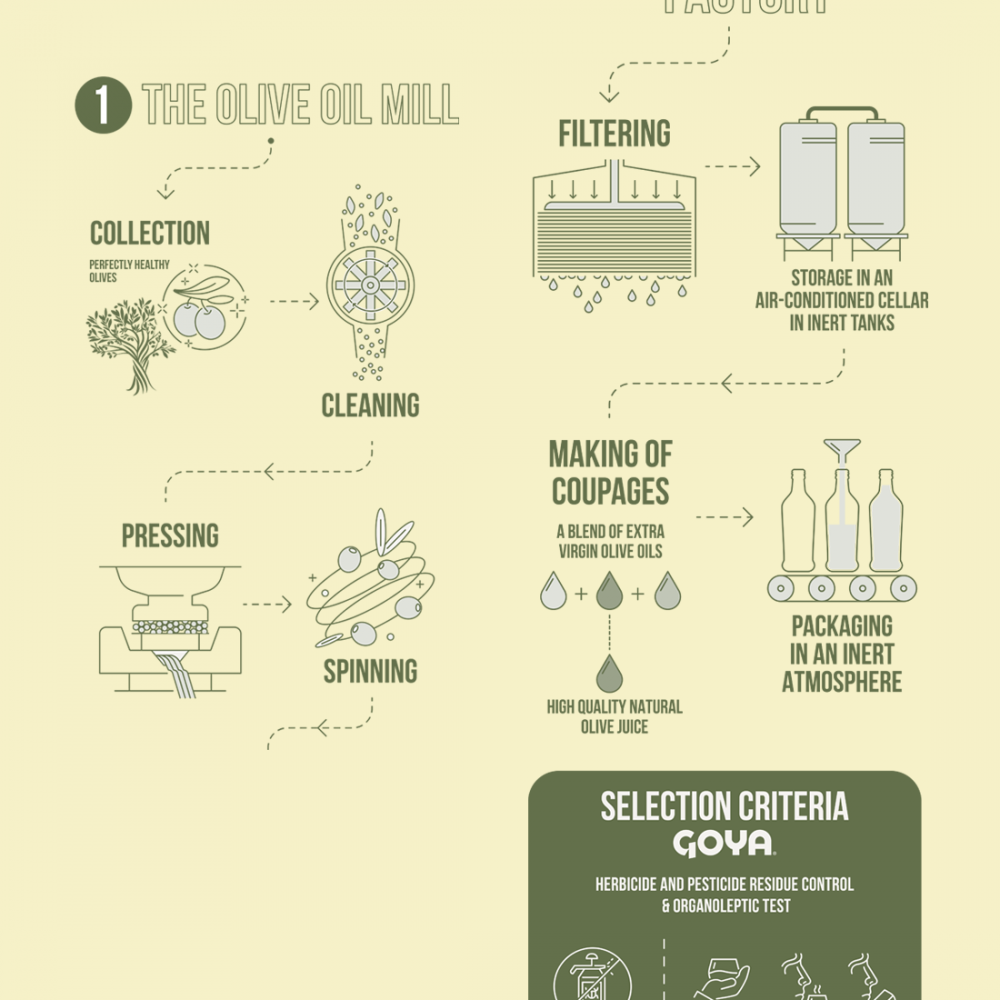Have you ever wondered what the olive oil production process involves? From the moment the olives are harvested until the moment a bottle of oil is opened, there are the key steps in the production of EVOO.
Collection.
Depending on the location and variety of olive, the olives are harvested between the months of October and February.
Transport to the olive oil mill and selection.
Once harvested, the olives are transported to the oil mill to begin the production process. This process must be as quick as possible to avoid deterioration to the fruit. Once in the mill, the olives are cleaned of impurities (leaves, stones, mud, etc.), weighed and stored for the shortest possible time in hoppers.
Pressing.
Pressing is the process of crushing the olives to extract the oil. Pressing produces a paste containing oil, pomace (solid residue of the stone, pulp and skin) and alpechín (vegetable water) from which the oil will later be extracted.
Spinning.
The oil is then washed with water and separated from the water by using a centrifuge.
At the factory: filtering-storage-making coupages-packaging
Finally, once the oil has been produced, it is filtered and stored in tanks, eliminating impurities by decanting.
The oil from each tank is chemically and organoleptically tested, to finally make of our coupages. Depending on the results, it is classified into different categories for bottling.
At Goya España we bottle four different extra virgin olive oils (GOYA® Organic, Unico, Robusto and Extra Virgin), a flavored extra virgin olive oil (GOYA® Garlic) and two other olive oils (GOYA® Puro and Light Flavor).
